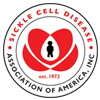Trusted Resources: Evidence & Education
Scientific literature and patient education texts
The clinical and biochemical effects of treatment with omega-3 fatty acids in patients with homozygous sickle cell disease
source: American Society of Pediatric Hematology/Oncology
year: 2016
authors: Ahmed Daak, West Palm Beach, Kebreab Ghebremeskel, Mustafa Elbashir
summary/abstract:Background: Chronic inflammation, coagulation activation and oxidative stress are increasingly recognized as the major determining factors of acute and chronic clinical manifestations of sickle cell disease (SCD). Several lines of evidence indicate that the anti-inflammatory, anti-aggregatory and anti-oxidant long chance omega-3 fatty acids (n-3) could be a safe and effective modifying therapy for SCD.
Objectives: To demonstrate the clinical and biochemical effects of n-3 fatty acids (DHA and EPA) treatment on SCD.
Design/Method: One hundred forty patients with homozygous SCD (aged 2-24) were randomly assigned and received, daily, 1 (age 2–4 y), 2 (age 5–10 y), 3 (age 11–16), or 4 (age >17 y) omega-3 capsules containing 277.8 mg docosahexaenoic (DHA) and 39.0 mg eicosapentaenoic (EPA) or placebo for 1 year. The rates of clinical vaso-occlusive crisis, hemolytic events, blood transfusion rate, were assessed. The effect of n-3 treatment on markers of inflammation, blood cells adhesion, oxidative stress, coagulation and intravascular hemolysis was investigated.
Results: Omega-3 treatment reduced the median rate of clinical vaso-occlusive events (P> 0.0001), severe anemia (P > 0.05), blood transfusion (0.05), white blood cell count (P> 0.05), plasma lactate dehydrogenase (LDH) , nuclear factor-kappa B (NF-κB) gene expression in buffy coat, expression of monocyte integrin and D-dimer (p>0.05). Omega-3 fatty acid group had significantly higher vitamin E plasma levels. Treatment with n-3 had no significant effect on plasma hs-CRP and plasma plasma tumor necrosis factor-α (TNF-α), (p>0.05).
Conclusion: These findings suggest that treatment with omega-3 fatty acids can be an effective therapeutic option for patents with sickle cell disease.
read moreRelated Content
-
8 Tips to Support Students With Sickle Cell DiseaseIn the United States, sickle cell diseas...
-
Hydroxyurea in sickle cell patients: A look at the correlation with hematologic malignanciesBackground: Hydroxyurea (HU) is a chemo...
-
HHS Secretary Alex Azar Touts White House Efforts to Fight Sickle Cell DiseaseBy 2029, Americans with sickle cell dise...
-
Gene therapy may help cure sickle cell disease, study saysA gene therapy that could provide a perm...
-
Prodigy’s death shines light on slow progress against sickle cell diseaseThe death of the rap artist Prodigy (Alb...
-
Potential treatment targeting nitric oxide levels, olinciguat, named orphan drug by FDAThe U.S. Food and Drug Administration ...
-
Emmaus Life Sciences Receives Validation From European Medicines Agency on Marketing Authorization Application for S...Emmaus Life Sciences, Inc. announced tod...
To improve your experience on this site, we use cookies. This includes cookies essential for the basic functioning of our website, cookies for analytics purposes, and cookies enabling us to personalize site content. By clicking on 'Accept' or any content on this site, you agree that cookies can be placed. You may adjust your browser's cookie settings to suit your preferences. More Information
The cookie settings on this website are set to "allow cookies" to give you the best browsing experience possible. If you continue to use this website without changing your cookie settings or you click "Accept" below then you are consenting to this.




 +myBinder
+myBinder
